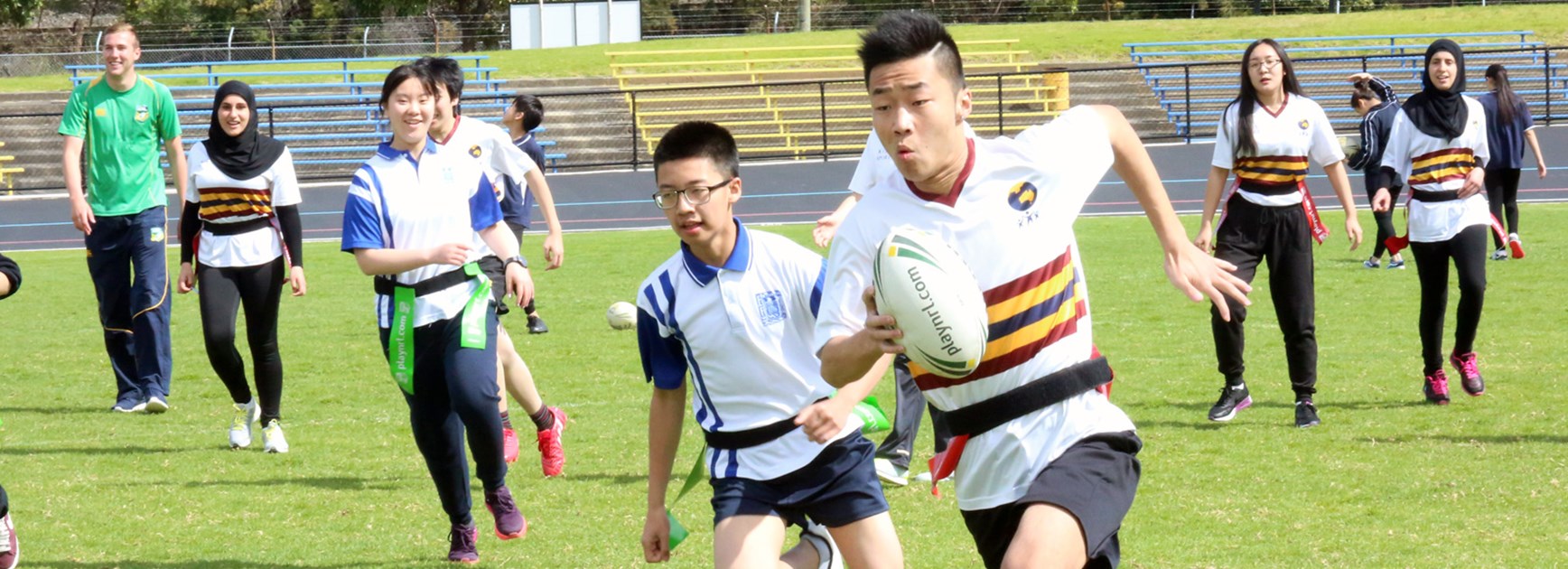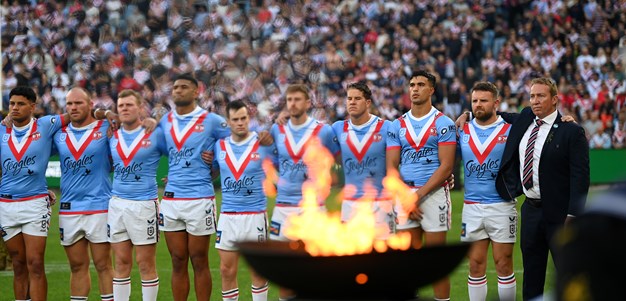
Hundreds of high school age kids from a wide variety of backgrounds came together at Lidcombe Oval on Thursday despite the fact they were all still on the way to learning the English language and had never laid eyes on a Steeden until recently.
The kids were from a variety of Intensive English Centre (IEC) schools and were put through some League Tag-style drills at Lidcombe Oval by former NRL stars and current NRL ambassadors Hazem El Masri and Joe Galuvao.
The Gala Day is part of an ongoing 'In Harmony In League' social inclusion program that has been run by the NRL and is now in its third year, having so far reached around 730 students at eight IEC schools, including 150 this year.
The thinking is that exposure to the sport in league-mad Sydney can help give young students going through an intensive program to learn English can be exposed to a sport that firstly they may enjoy, and secondly will give them an extra avenue of social interaction in their new country and a point of conversation with new classmates, while also hopefully creating some rugby league fans and even players of the future.
El Mazri – who came to Australia as a soccer-mad 12-year-old from Tripoli in Lebanon before discovering rugby league and going on to become the game's highest ever point scorer, breaking a host of records along the way – can relate to what the youngsters are going through.
"I arrived to Australia, being a young kid, 12 years old, I played soccer," El Masri told NRL.com in between guiding the youngsters through some activities.
"When I watched the game of rugby league I fell in love with it and I had the passion for it and I followed it all the way through and I was able to make it because I enjoyed the game and I loved it so much.
"That's what it's all about, bringing them all here together, teaching them a new game in a new country for them. It happened to me and I want to share my story with them."
El Masri said it was also about rewarding the kids with a fun day of activity after an intense six weeks of language study, as well as bringing together people from different cultures and backgrounds.
Asked if the clinics may lead to the discovery of the next Hazem El Masri, the Bulldogs premiership-winner said: "We don't want them to come out here and forget about having fun! But hopefully we get one or two people that pursue it in the future, you never know."
Canterbury Bulldogs General Manager of Community Fayssal Sari said the club wanted to help the kids get involved in a sport that is both unifying and provide them an avenue for social inclusion and a sense of belonging to a community.
"It will get the kids to grow an attachment to the game and pick a team to follow and that's good for the clubs and good for the NRL and good for the community," he said.
"They start to have that friendly banter and they start reinvesting back into the game and encouraging their mates to get on board and become members."
He added the kids that first walked in apprehensive and nervous were 20 minutes later running around passing and kicking with other kids from vastly different backgrounds.
"It's just team A versus team B. Culture, religion, it all goes out the window," he said.
NRL.com spoke to one of the students, 14-year-old George from Ghana, from Evans IEC in Blacktown, who has only been in Australia a short time but nevertheless was showing more than a bit of a knack with Steeden in hand.
The first he saw of rugby league was when the 'In Harmony In League' program came to Evans IEC.
"My first time playing rugby, I love it, it was good," he said.
Asked if he may have a future in the game, he said: "I use my talent to play rugby."
And has he seen enough NRL on TV to have a favourite team? "My favourite team is Broncos," he smiled. The way they've been going in the time George has been in the country, you can't blame him.
Galuvao said a big part of the NRL's goal with the program is to help the kids integrate into their new environment.
"A lot of these IEC kids are newly arrived migrants so for us as a game, the context is to teach them obviously the skills of our game but also the life lessons behind it," Galuvao said.
"We believe in using movement as a way to teach kids and one of the themes is teamwork, just emphasising that to kids, showing how important teamwork is in rugby league, that it's important for them in terms of working within school and within the community.
"It's those types of messages we hope that kind of resonates with them and helps them with their integration into Australian society."
Galuvao gave the example of one boy who previously knew nothing about rugby league but ended up going to a Penrith game just out of his own interest developed through the program.
"He loved it, then the next week one of the mainstream students was wearing a Panthers hat and they got talking about 'hey I went to a Panthers game', so it's a talking point for kids to learn our game but also share their experiences with others," he said.
"Rugby league is massive here in Sydney and once they learn that it connects to a sense of community and they see it on TV and say 'hey that's what we learned in school'. It's that whole integration type of message that we want to deliver."

